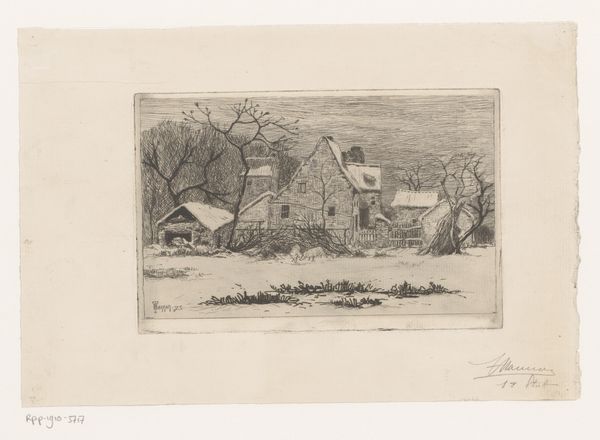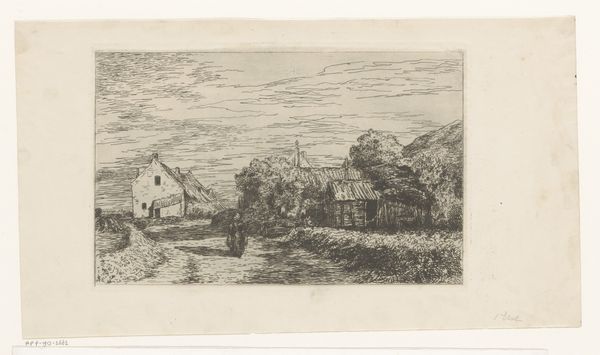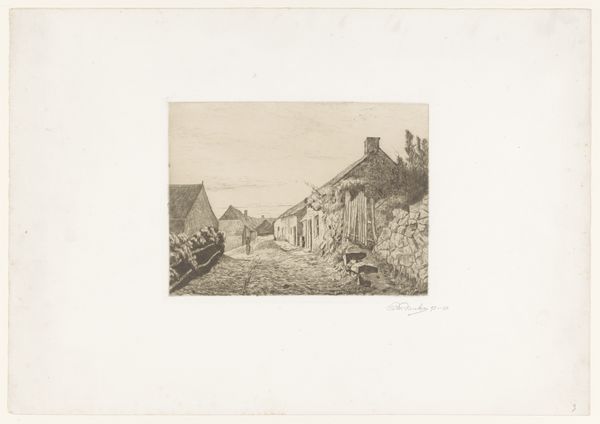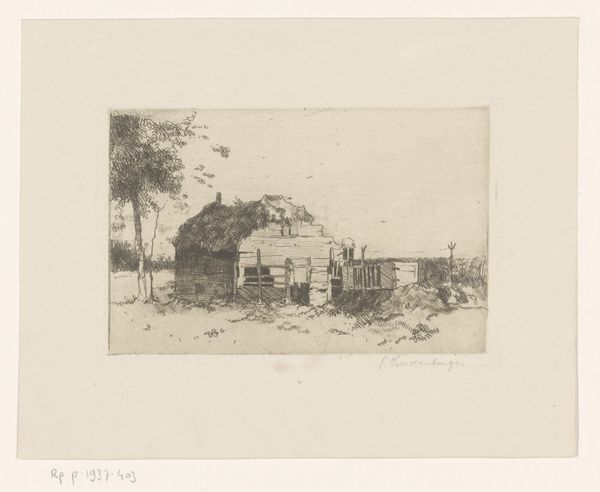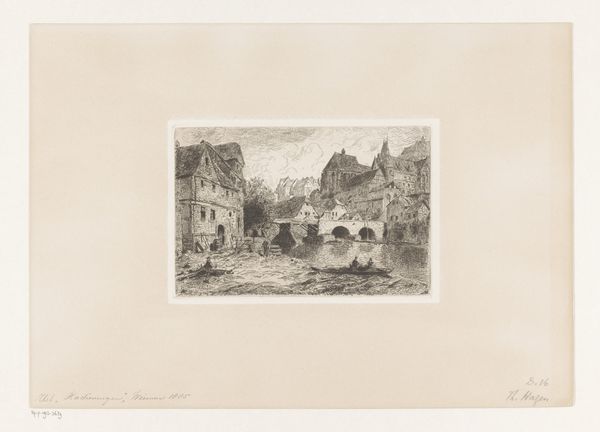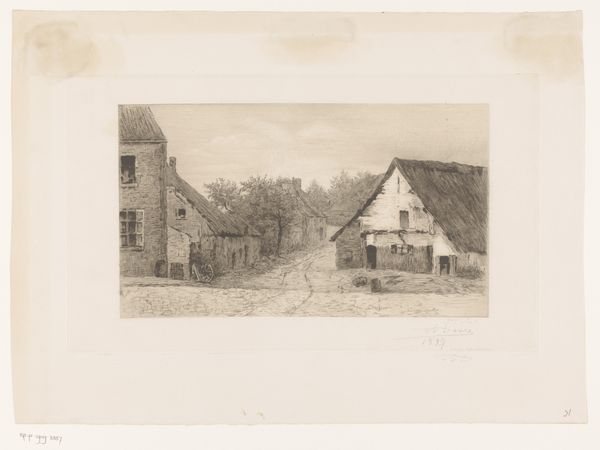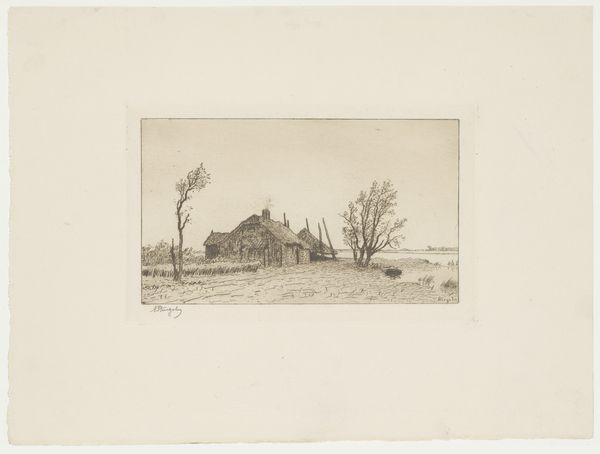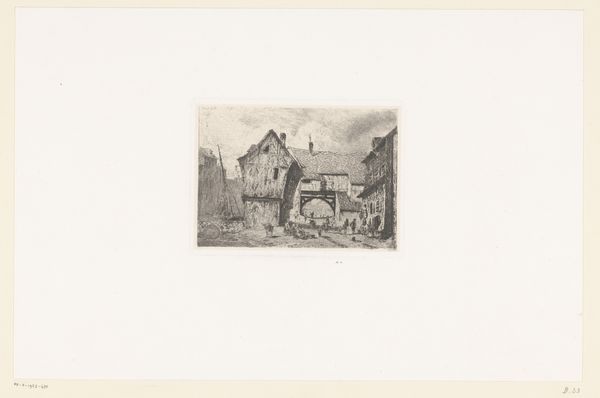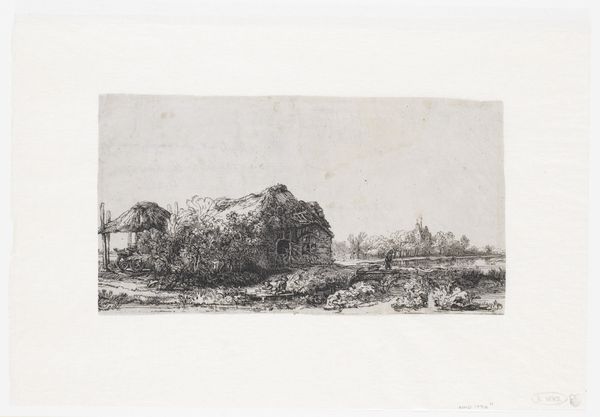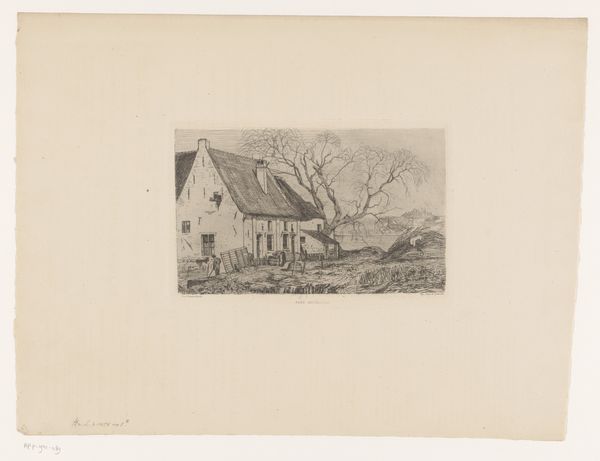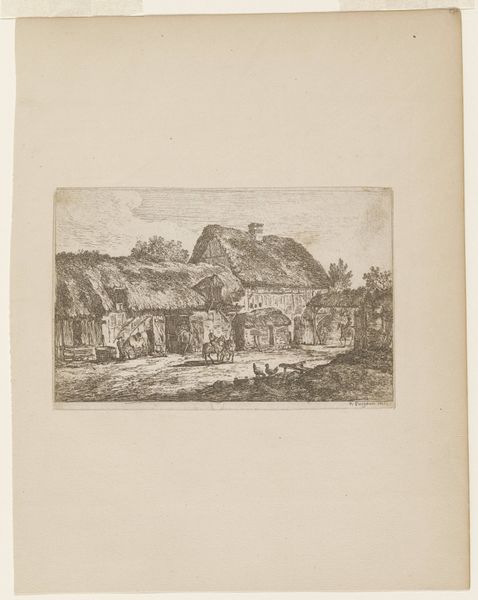
print, etching
# print
#
etching
#
landscape
#
etching
#
monochrome
Dimensions: height 144 mm, width 230 mm
Copyright: Rijks Museum: Open Domain
Editor: Here we have "Huizen in Elten" by Harke Johannes Kolk, an etching, placing it somewhere between 1885 and 1935. It's incredibly detailed, and the monochromatic palette creates such a strong sense of stillness and quiet. What do you make of its composition? Curator: I observe a distinct organization of form and space. Notice the rhythmic repetition of the rooftops, countered by the vertical thrust of the bare trees. The artist deftly uses line and texture to define shape. There's a conscious arrangement creating depth through varied densities of hatching, wouldn't you agree? Editor: Yes, definitely, especially looking at how he varies the weight of the lines. How do you read the areas of emptiness versus where everything is really compacted? Curator: These tonal contrasts establish both foreground and background, yet function more importantly as abstract shapes in themselves. The void invites contemplation, juxtaposed with the intricacy of the village scene, focusing on shape and texture. How else could line function? Editor: To define boundaries? I think in art historical depictions of landscape, these limits tend to function very powerfully, perhaps implying the bounds of existence as much as land… Thanks, that really opens things up for me. Curator: Consider that by isolating intrinsic elements through form, Kolk encourages a focus on the inherent qualities of landscape rather than overt storytelling, focusing the gaze onto its purest composition. Thank you for drawing this conversation.
Comments
No comments
Be the first to comment and join the conversation on the ultimate creative platform.
